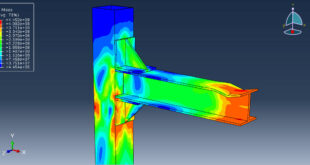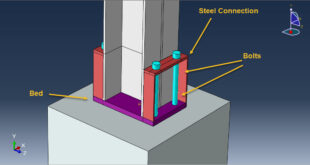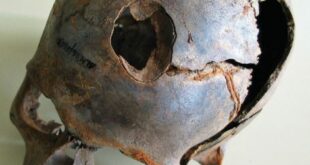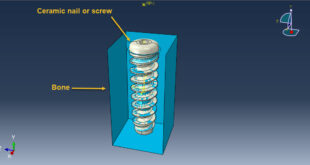In this tutorial, the Simulation compression test of a concrete column reinforced with GFRP bars and strips in Abaqus has been investigated. The concrete column is modeled as a three-dimensional solid part. The GFRP bars and strips are modeled as three-dimensional solid parts. You can see a figure of the assembled parts below
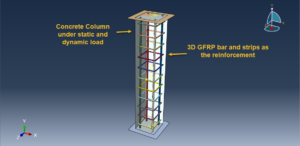
As a relatively new material with high strength–weight ratio, excellent corrosion resistance, and electromagnetic insulation, internal fiber-reinforced polymer (FRP) reinforcement is considered a sustainable alternative to steel reinforcement in the marine environment, saline-alkali area, infrastructure, and bridge engineering . Glass fiber-reinforced polymer (GFRP) bars are with the similarity coefficient of expansion as concrete and high rate of quantity and price when compared with the other kinds of FRP. It may help alleviate the corrosion of internal steel reinforcement in the concrete columns when FRP bars are used as the longitudinal reinforcement. It is demonstrated that applying FRP bars to be internal reinforcement of concrete columns can be feasible, though the compressive strength is far less than the tensile strength
To model concrete behavior under compression load in static and dynamic analysis, the Concrete Damaged Plasticity model is selected. The model is a continuum, plasticity-based, damage model for concrete. It assumes that the main two failure mechanisms are tensile cracking and compressive crushing of the concrete material. The concrete-damaged plasticity model in Abaqus provides a general capability for modeling concrete and other quasi-brittle materials in all types of structures. To model GFRP material, the elastic model with material orientation is considered
Both dynamic and static step is used and the results for them are compared. The contacts, boundaries, and proper mesh are assigned to all parts. In the static model compression and tension damage were used, in the dynamic model, besides those, the strain damage is implied also
After both analyses, the results for stress, strain, tension and compression damage, force-displacement diagram, and others are available. You can see some figures for the results below
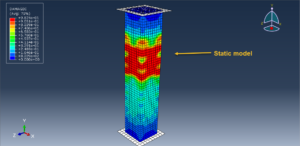
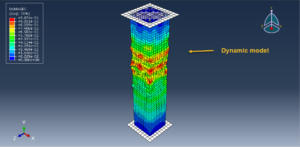
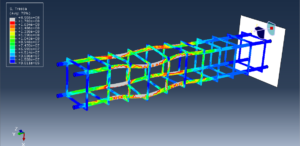
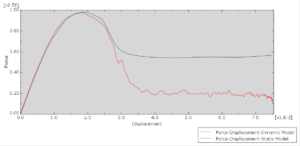
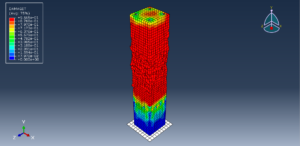
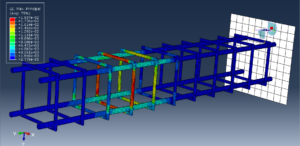
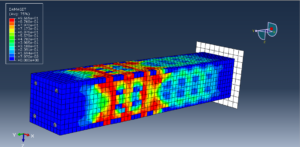
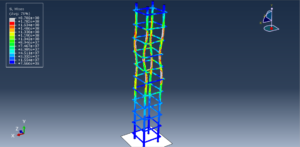
You can provide CAE, INP, and English video files of this simulation here. The cost of these files is Thirty Euros. you can click on the bellow bottom to begin the process
You can purchase the tutorial through a PayPal account, a Visa, or a Master card, just before payment, send me an email to this address: karampourp@gmail.com
 آموزش آباکوس از مقدماتی تا پیشرفته/شبیه سازی در آباکوس/فیلم های آموزشی آباکوس آموزش آباکوس/ مقدماتی تا پیشرفته/شبیه سازی پدیده های مختلف در آباکوس/دانلود ویدئوهای آموزشی آباکوس
آموزش آباکوس از مقدماتی تا پیشرفته/شبیه سازی در آباکوس/فیلم های آموزشی آباکوس آموزش آباکوس/ مقدماتی تا پیشرفته/شبیه سازی پدیده های مختلف در آباکوس/دانلود ویدئوهای آموزشی آباکوس
